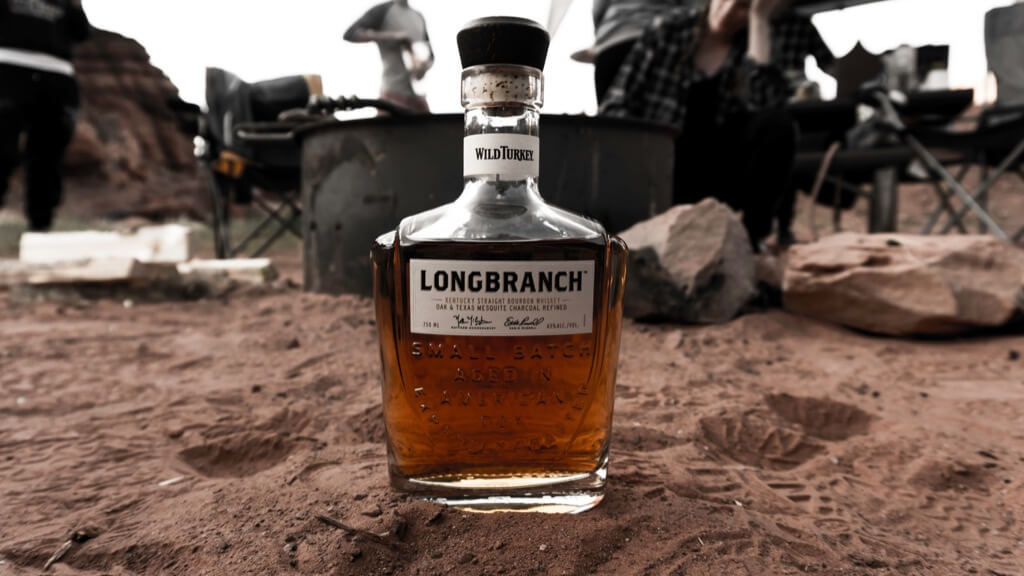Glenfiddich Is The Valley of the Deer
In the realm of single malts, Glenfiddich reigns supreme, boasting the highest global sales. Nestled in the Speyside region, it’s renowned for producing whiskies with a fruity, delicate profile. The name Glenfiddich, derived from Gaelic, translates to “valley of the deer,” which explains the stag symbol adorning each bottle.
- Glenfiddich was one of the first distilleries to use oak barrels from America and Spain for aging, which significantly influenced the flavor profile.
- It remains one of the few family-owned distilleries in Scotland, with the Grant family still at the helm.
- Introduced in the 1960s, the triangular shape of Glenfiddich bottles was a groundbreaking design that set it apart in the market.
- Glenfiddich was instrumental in developing and promoting the single malt category globally, a segment previously dominated by blends.
- The distillery is known for its sustainability efforts, including using spent grains to generate power for the site.
The Story Behind Famous Grouse
Famous Grouse, a household name in scotch whisky blends, was born in 1896 in Perthshire. Its creator, Matthew Gloag, drew inspiration from Scotland’s beloved red grouse, crafting a blend that has since become a staple in bars worldwide.
- For many years, Famous Grouse has been the best-selling whisky in Scotland.
- A variant called The Black Grouse was introduced, which includes peated malts, adding a smoky flavor distinct from the original blend.
- The brand has been awarded a Royal Warrant by the Queen, a mark of recognition for suppliers to the Royal Household.
- Famous Grouse is now available in over 100 countries, making it a truly global brand.
- The brand has been involved in unique collaborations, including a series with renowned artists for limited-edition packaging designs.
The Rocky Hill Of Craigellachie
Craigellachie, another gem from Speyside, means “rocky hill” in Gaelic, a nod to the striking cliff overseeing the Spey River. Distinctive in its production methods, Craigellachie utilizes a worm tub for distillation, a unique feature that sets it apart from its Speyside counterparts.
- Craigellachie is one of the few distilleries that still uses an old-fashioned worm tub condenser, giving the whisky its distinct flavor.
- The distillery has released several limited edition whiskies, including a 31-year-old single malt that won the Best Single Malt Whisky at the World Whiskies Awards.
- Known for its slightly sulfurous and meaty flavor profile, Craigellachie offers a bold taste that sets it apart.
- The distillery buildings are classified as Category B listed buildings, reflecting their historical and architectural significance.
- Craigellachie maintains strong ties to the local community, often hosting events and tastings for residents and visitors.
A Tribute to Its Birthplace, Mortlach
Mortlach, yet another Speyside whisky, pays homage to its origins. The distillery, founded in 1923, is located in what was once the town of Mortlach, now known as Dufftown. It stands as a testament to the town’s rich history.
- Mortlach uses a unique 2.81 times distillation process, a complex method that contributes to its rich and weighty flavor.
- It was the first distillery built in Dufftown, a region now known as the ‘Whisky Capital of the World’.
- The distillery’s buildings are some of the oldest in the region, with parts dating back to the original founding.
- Mortlach is known for releasing rare and aged single malts, highly sought after by collectors and connoisseurs.
- The brand has been involved in pairing events with fine cuisine, showcasing the versatility of its whiskies in gastronomy.
Ardbeg Is The Space-Aged Whisky
Ardbeg, which means ‘small height’ in Gaelic, gained fame for its space endeavor. This distillery once sent whisky into orbit, turning the “small height” into an interstellar journey.
- Ardbeg is known for its deep, intense peat flavor, making it a favorite among fans of heavily peated whiskies.
- The distillery has a global fan club known as the Ardbeg Committee, with members receiving exclusive releases and information.
- Ardbeg was closed in 1981 and reopened in 1997, with its revival being a significant event in the whisky world.
- Beyond the space experiment, Ardbeg is known for its innovative approach to whisky-making, including experimenting with different casks and aging processes.
- Celebrated annually, Ardbeg Day is a global event where fans gather to celebrate and enjoy new and limited edition releases.
Highland Park
Orkney’s Highland Park, Scotland’s northernmost distillery, was founded by Magnus Eunson, a notorious bootlegger turned legitimate distiller. Its name reflects its location, High Park, an elevated site fitting for a distillery with such a storied past.
- Highland Park embraces Orkney’s Norse heritage, with many of its whiskies named after Norse gods and legends.
- The distillery uses local heather-rich peat, giving its whisky a distinctive aromatic smoke character.
- Highland Park is partially powered by solar energy, reflecting its commitment to sustainability.
- It’s one of the few distilleries that still hand-turns malt, a traditional method that adds depth to the whisky’s flavor.
- The distillery’s craftsmen, including coopers and coppersmiths, use age-old techniques passed down through generations.
Talisker
Talisker is the sole distillery on the Isle of Skye, named after the Talisker House, the original residence of the Macleod Clan’s chiefs. This distillery embodies the rugged beauty and history of its island home.
- Talisker’s whiskies are known for their maritime character, with notes of sea salt and seaweed, influenced by its coastal location.
- The distillery has unique expressions like Talisker Storm and Talisker Port Ruighe, each offering a different take on its classic profile.
- The rugged terrain of Skye plays a significant role in shaping the character of Talisker’s whiskies.
- Established in 1825, Talisker has a storied history and is a key part of Skye’s cultural heritage.
- The distillery offers a renowned visitor experience, including tastings and tours that showcase its stunning surroundings.
The Hollow of the Mill Lagavulin
Lagavulin, translating to ‘hollow of the mill’ in Gaelic, stands out for its deep-rooted connection to the land. The name itself paints a picture of the distillery’s serene and historical setting.
- Lagavulin employs a longer fermentation process compared to many distilleries, contributing to its rich, complex flavor.
- The distillery is known for its limited-edition releases, including the sought-after Lagavulin 16-Year-Old.
- Lagavulin sponsors the Islay Jazz Festival, reflecting its deep connection with the local culture.
- Its whiskies are known for their strong peat influence and robust character, typical of Islay malts.
- Lagavulin’s whiskies are primarily aged in oak barrels, which contribute to their distinctively smooth and rich profile.
Laphroaig Is Named After a Loch
The southern coast of Islay is home to Loch Laphroaig, the namesake of the Laphroaig distillery. The Gaelic name implies ‘the depression of Broad Bay,’ reflecting the geography that shapes its character.
- This unique program allows members to lease a plot of land in Islay and receive rent in the form of whisky.
- Originally, Laphroaig was sold as a medicinal spirit due to its unique antiseptic properties from the peat.
- Laphroaig was granted a Royal Warrant by Prince Charles in 1994, a high honor in the industry.
- Besides its classic 10-year-old, Laphroaig offers a range of expressions, including cask strength and quarter-cask matured whiskies.
- The distillery maintains the tradition of cutting its peat, ensuring a consistent and unique flavor profile.
Macallan Is A Name with Roots
The Macallan’s name intertwines Gaelic origins and historical figures. “Mac” signifies ‘fertile ground,’ while “ellan” pays tribute to St. Fillan, a ninth-century Irish monk. The usage of “The” adds a layer of prestige to this esteemed brand.
- The Macallan’s spiritual home is the Easter Elchies House, a Scottish Highland manor built in 1700.
- The Macallan is renowned for its commitment to using exceptional oak casks, which account for up to 80% of the final flavor of the whisky.
- The brand is known for collaborations with renowned artists and photographers for limited edition series.
- Bottles of Macallan have broken records at auction, including one bottle sold for over a million dollars.
- The Macallan estate includes a $200 million distillery that focuses on sustainability and blending with the surrounding landscape.
The Glenlivet
The Glenlivet, like its name, which means “smooth flowing one” in Gaelic, mirrors the gentle flow of the river through its glen. This name perfectly encapsulates the essence of its smooth, refined whiskies.
- The Glenlivet was the first licensed distillery in the Speyside region, paving the way for the legal production of whisky in the area.
- The distillery offers a rare Cellar Collection, showcasing some of its most exquisite and aged whiskies.
- The Glenlivet has experimented with various cask finishes, including American oak and French oak casks.
- The distillery is involved in several environmental conservation efforts, including river conservation projects.
- The visitor center offers guided tours and tastings, including rare and vintage samples.
Glenmorangie Is The Glen of Tranquility
Glenmorangie, a name embroiled in linguistic debates, ultimately signifies ‘glen of calm’ in Gaelic, a fitting descriptor for a distillery known for its serene and untroubled spirits.
- Glenmorangie boasts the tallest stills in Scotland, which contributes to its whisky’s light and delicate character.
- They release an annual Private Edition series, featuring unique and experimental whiskies.
- The distillery uses mineral-rich water from the Tarlogie Springs, contributing to the whisky’s distinct taste.
- Glenmorangie is involved in research projects to revive ancient barley varieties for whisky production.
- Glenmorangie has collaborated with artists and designers to create limited-edition
The Stony Shore Bank Of Bruichladdich
Bruichladdich, meaning “stony shore bank” in Gaelic, is surrounded by the rugged coastline of Islay. This name encapsulates the distillery’s connection with its rugged, maritime environment.
- Bruichladdich is renowned for its extensive experimentation with different cask types, including those previously used for wine, rum, and bourbon, leading to a wide array of unique flavor profiles.
- This distillery is a strong advocate for non-chill filtration, believing that it preserves the whisky’s natural flavor and character.
- After being closed in 1994, Bruichladdich was revived in 2001 under new ownership, focusing heavily on innovation and traditional methods.
- Apart from whisky, Bruichladdich also produces The Botanist Gin, a popular and unique gin infused with 22 local botanicals from Islay.
- Bruichladdich is committed to sustainability, aiming to become more environmentally friendly, including efforts to reduce carbon emissions and sourcing all of its barley from Scotland.
Royal Brackla Is The King’s Choice
Royal Brackla, often termed “the king’s whisky,” was the first to receive the Royal Warrant from King William IV in 1835. The “Royal” in its name is a nod to this prestigious recognition, distinguishing it in the world of whisky.
- Royal Brackla was the first Scotch whisky to be awarded the Royal Warrant, granting it the right to use the term “Royal” in its name, a significant honor in the industry.
- Known for producing a rich and full-bodied whisky, Royal Brackla typically features sherry cask maturation, giving it a distinct, robust flavor profile.
- It was among the early adopters of longer aging processes, understanding the benefits of extended maturation for developing depth and complexity in its whiskies.
- Despite modernization, the distillery still honors several traditional production methods, including using open mash tuns and worm tubs.
- Royal Brackla’s location in the Highlands, near the fertile Moray Firth, offers a unique microclimate, contributing to the distinct character of its whiskies.




